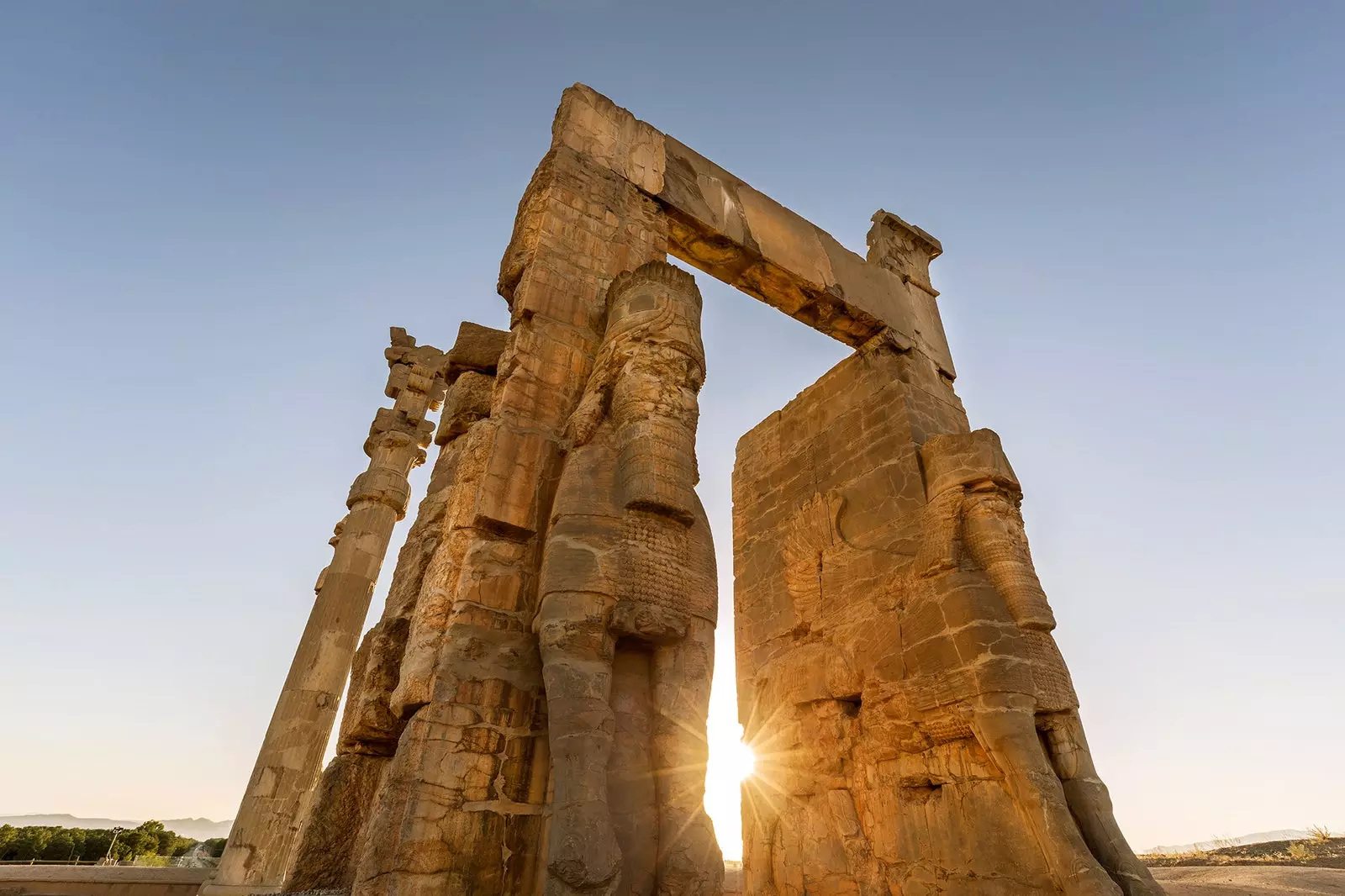
gate of nations
Maybe you feel a little tickle in your stomach and your breath quickens when you reach this point of Iran . It is very likely that the hair will stand on end. that suddenly you feel a small lump in your throat.
Fear not, everything goes as normal: is the emotion . An unequivocal sign that you are about to do something big . to live a magical experience . Something that, taken to the field of travel, can only mean one thing: soon you will set foot, for the first time, in a unique place.
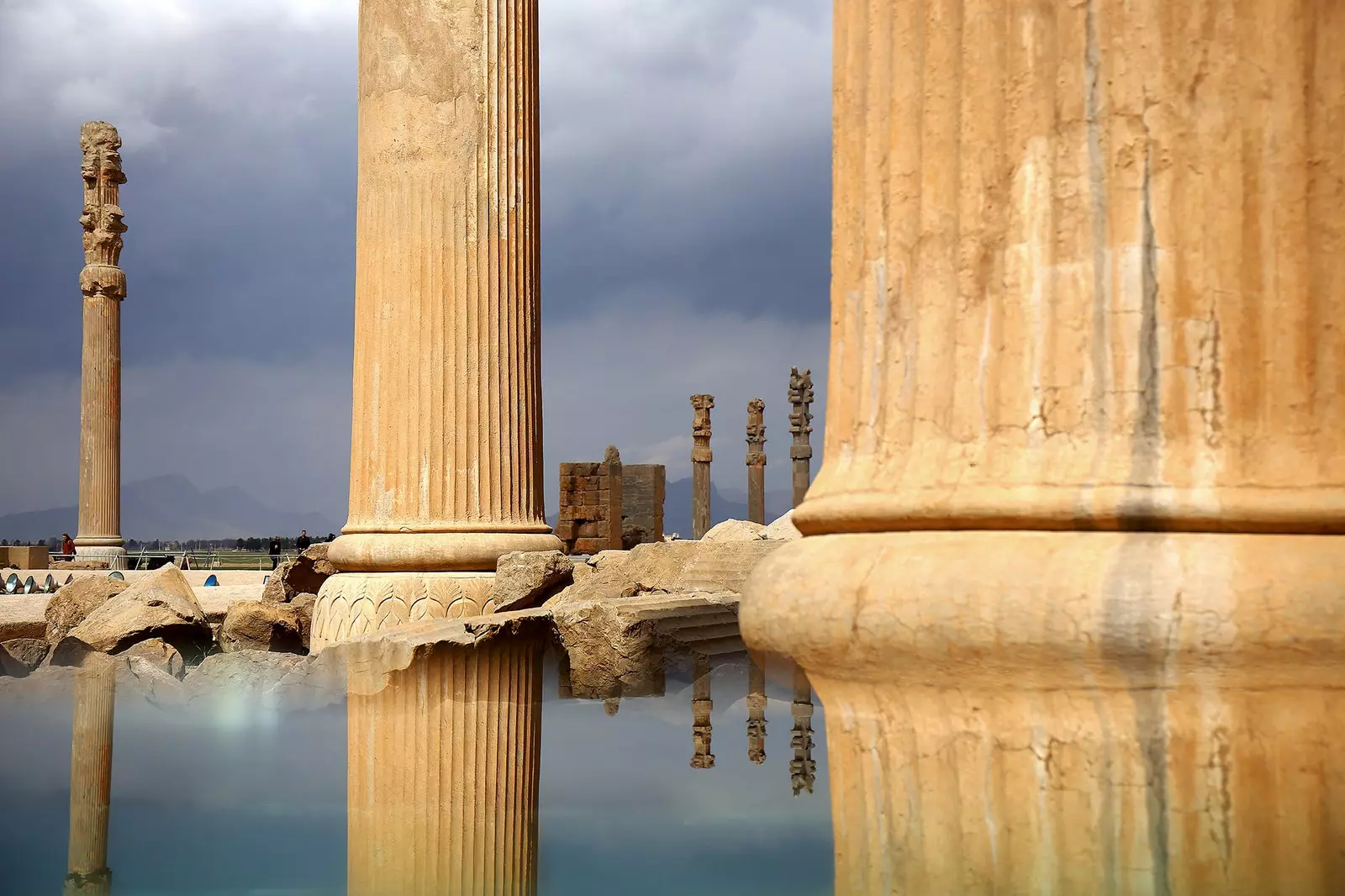
Walking through its ruins is entering a fascinating world
A mythical place like Persepolis.
As basic data for the most clueless, and before getting into the matter, we summarize that Persepolis was the most important city of the Achaemenid Empire , the first of the Persians and the largest of all those in the Middle East. A huge city that reached 125 square kilometers of extension prepared to impose on the subjects, frighten the enemy, and last throughout the centuries, making its historical relevance clear.
A city in which palaces they were counted by dozens, majestic buildings rose on every corner and that, despite everything, it would meet a terrible end: only two centuries after its foundation by Darius I the Great in 520 BC. of C ., would arrive Alexander the Great ready to destroy her.
Today, stroll through its ruins , is to enter a fascinating world full of details that make the imagination fly. The luck of being able, 2500 years after its heyday, to know what remains of it, is largely due to the fact that Persepolis was abandoned for centuries, letting the dust and sand cover it entirely. A protective layer that would be shed in 1930 , when the excavations to give it new life they allowed it to be rediscovered.
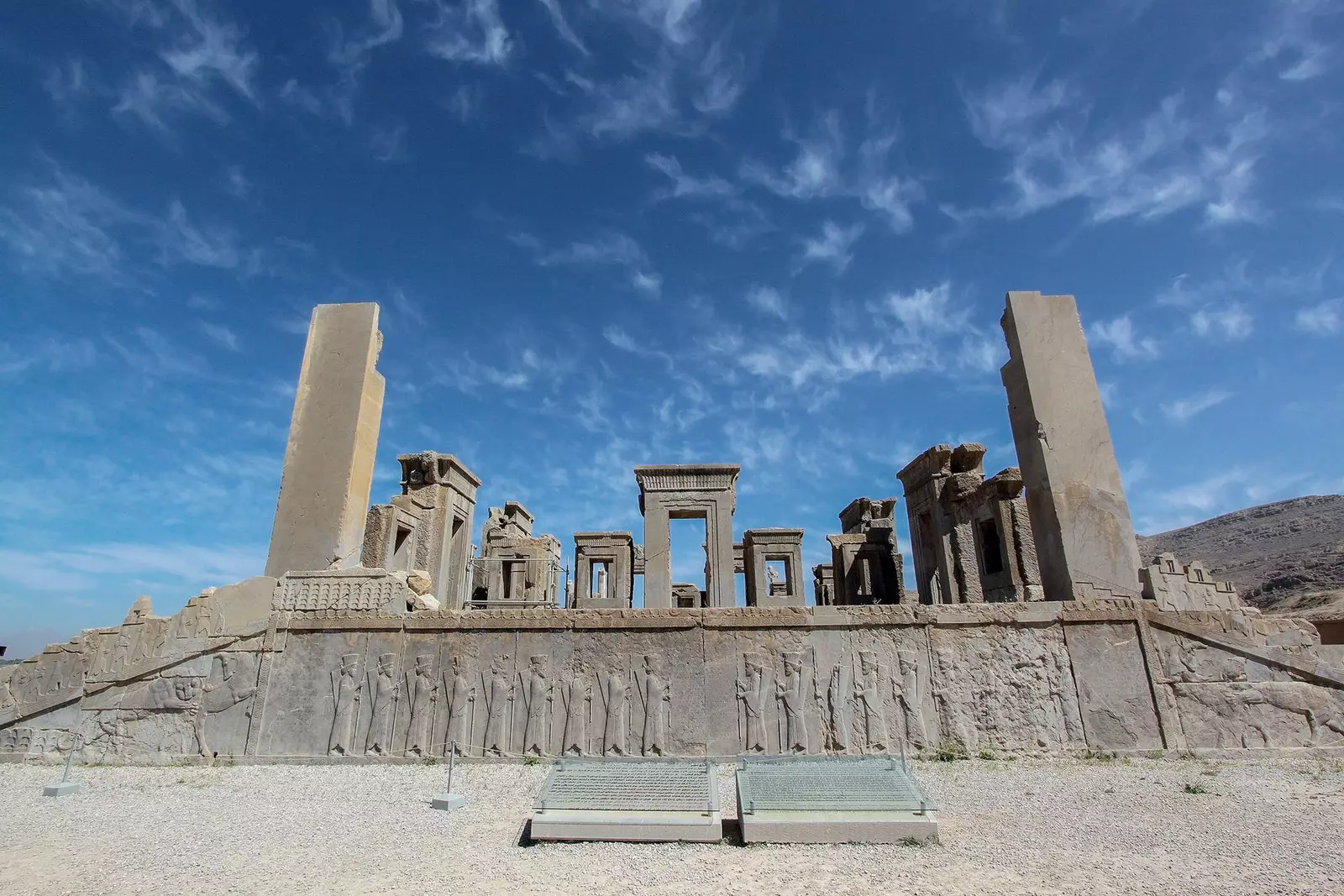
Visiting the ancient city without the company of a guide is not worth it
Before starting this route through Persepolis, a piece of advice: visiting the ancient city without the company of a guide is not worth it . There are too many details, too many stories, that going alone you would miss. Hiring him is as simple as approaching the access office and, in the same place where tickets are purchased, request it: there you will be assigned an official one.
Another recommendation? Be sure to take enough water with you and protect yourself from the sun with sunscreen and a hat : the complex barely has shaded areas and during some months of the year, especially between May and October, the heat can become suffocating . Afterwards, you will be ready to enjoy this wonder declared a World Heritage Site by Unesco.
THE FIRST CONTACT: ITS STAIRS
They are huge, made from large blocks of stone, but carved in such a way that the depth of each step is minimal. Why? so that when they great leaders They will come from all corners of the empire to pay homage —And pay his tributes— to the king, his long and elegant robes looked majestic.
This is the imposing cover letter that serves as the entrance to one of the most recognized symbols of Persepolis: the great Gate of Nations , with its two enormous winged bulls flanking the entrance —and its corresponding small group of travelers taking the appropriate selfie around it—, is an emblem of the city and one of those details that let us intuit how much magnificence we speak here . Take a good look at her, from every angle and position. Allow yourself to enjoy it.
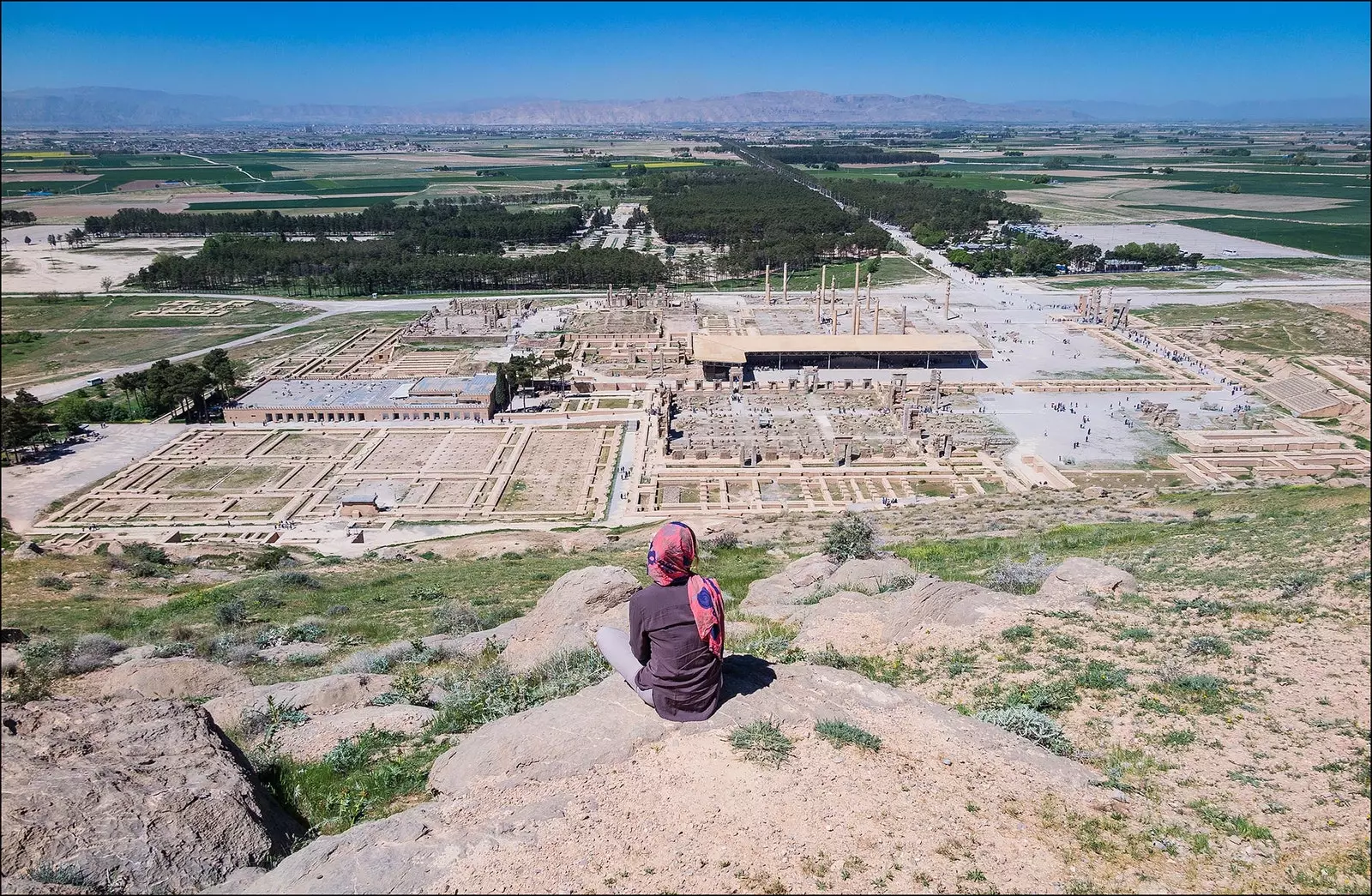
You will feel the emotion of being about to do something great
From this point on, it will be important for you to consider Persepolis as an open book : what's left of its reliefs , present in walls, stairs and columns, will enlighten you on what events happened in the city in the past . Look at the elegance of each one of them, carved with absolute perfection and full of beautiful details. They are making a fact clear to you: they were not made by slaves, but by thousands of brilliant artists and craftsmen who came here from the remotest places of the Persian Empire.
THE STORY TOLD BY A BUILDING: THE APADANA PALACE
Let the emotion run free . Let your head go crazy recreating the great ceremonies that took place in this same space hundreds of years ago.
It will not be difficult for you when you reach the Apadana Palace , ordered to rise by Xerxes I , one of the three monarchs who ruled from Persepolis. Here was the audience hall of Darío I and, although little remains of that memorable construction, the bas-reliefs present in what were once the access stairs —we already warned you a little above— they are the ones in charge of taking you to those parades that took place at the time in honor of the king.
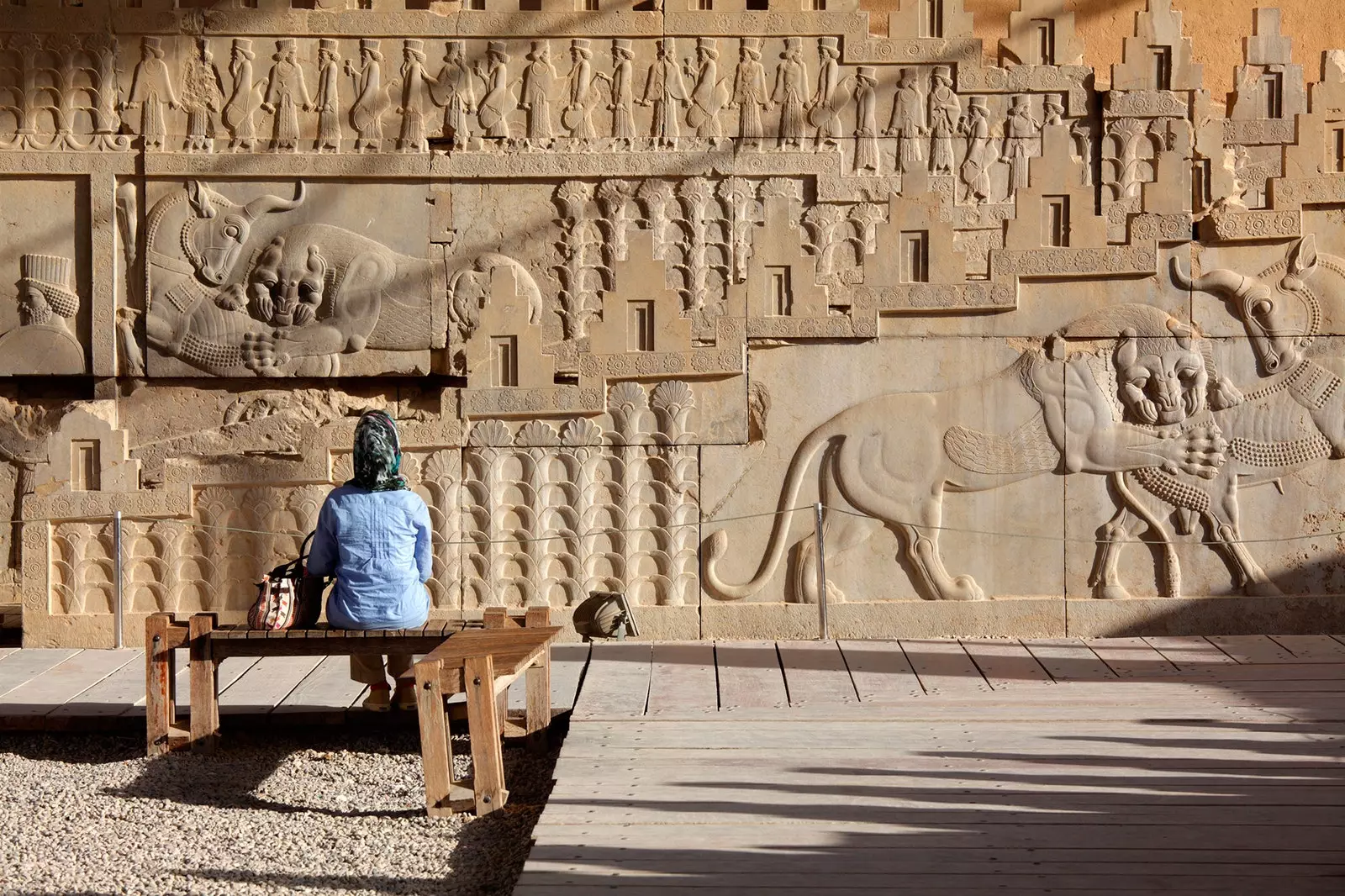
Apadana Palace Staircase
Of all the panels, look closely at those in the southern area: there are up to 23 of the delegations that came from the most diverse corners of the world . The most curious thing is that each one of them is recognizable, either for their clothes , by your offerings or by other small elements that identify them —the conservation level Trust us, it will leave you speechless. Play to guess who they are. Can you tell the difference between Ethiopians from the Arabs, Elamites, Egyptians, or Parthians ?
And although the Apadana Palace draws all eyes, it is far from the only one that was built in Persepolis.
In fact, just by walking to the southwest side of the complex you can see the ruins of several of them. Starting with him Tachara Palace , the most impressive of all, continuing through the Palace H. , which never came to an end, and ending with the hadish palace , which can be accessed from the royal courtyard that adjoins Tachara, and which was completed by order of King Xerxes I.
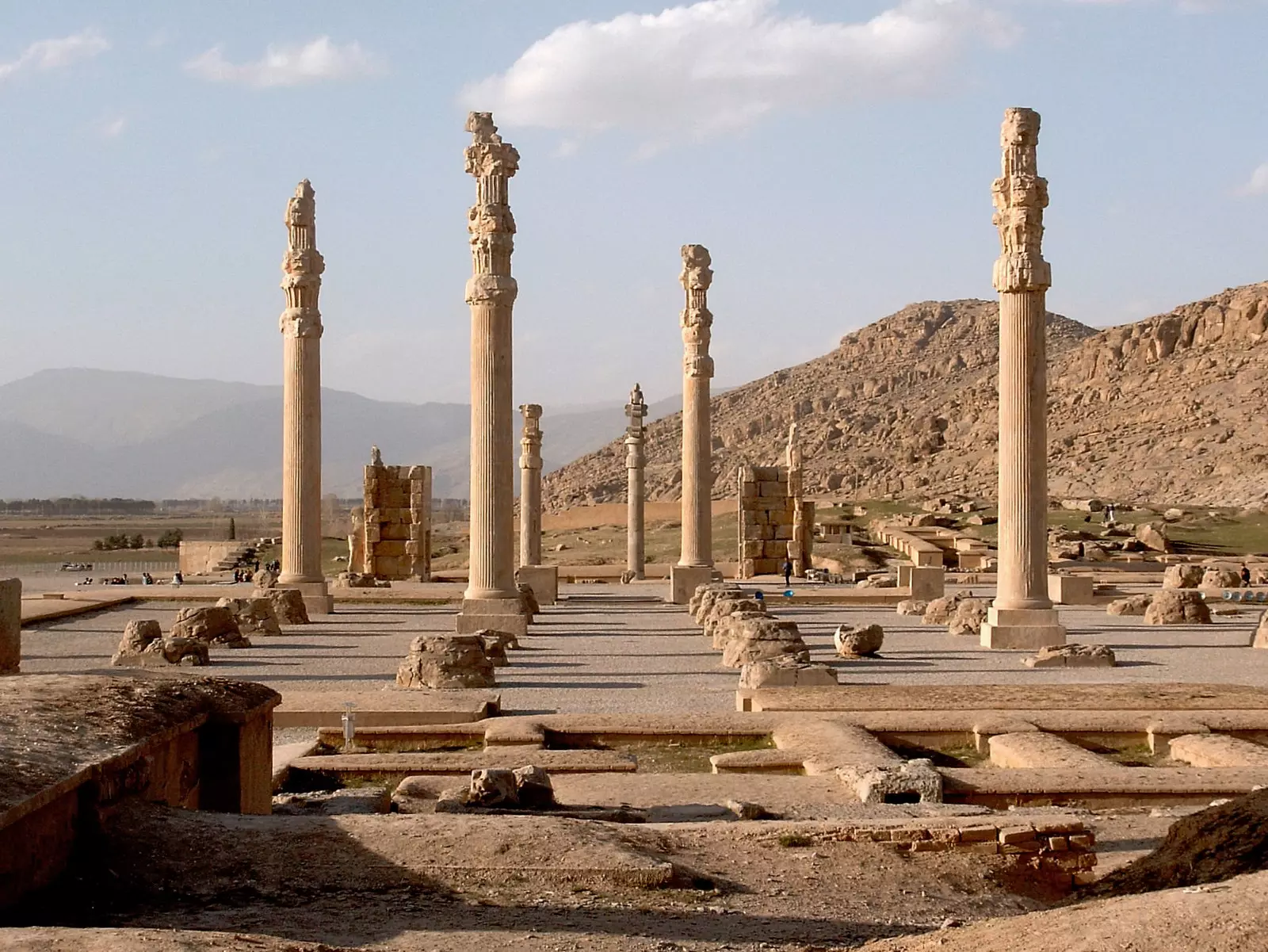
Palace of 100 columns
DO NOT STOP THE RHYTHM: THE PALACE OF 100 COLUMNS
And just when you thought you had seen it all, you are faced with what had to be another huge wonder: the second construction by size of Persepolis and one of the most imposing . The Palace of 100 Columns It was, according to scholars, used to receive the military elite of the empire. The same one who watched over his safety.
Although it was almost completely destroyed, here you can see a couple of details that still remain: the base of the hundred columns that supported the palace , which were, as you can imagine, destroyed, and the door jambs , where again the reliefs, with the king, his soldiers, and figures such as lions, bulls or flowers, are responsible for revealing what use was given to the place.
By the way, in front of the palace, some half carved stone blocks they suggest that the construction of an even larger version of the Gate of Nations was being conceived. "The unfinished door", it was named . It was clear.
THE ICING ON THE CAKE? THE TREASURE!
It is said, it is commented, that when Alexander the Great came to Persepolis and razed everything , he needed 3 thousand camels to carry all the goods and riches that he looted from the city.
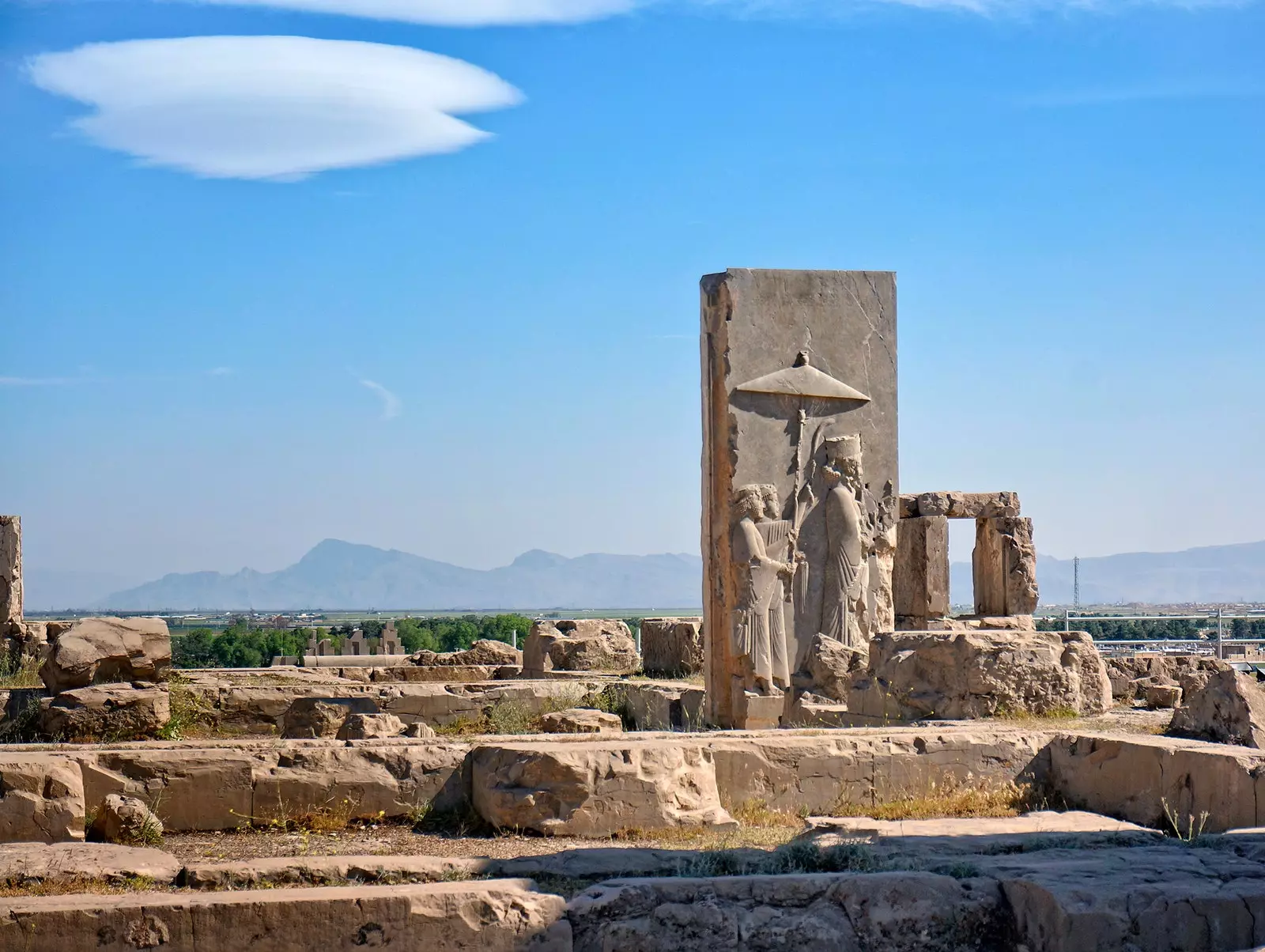
Carved remains abound everywhere
In fact, you just need to take a look at what's left of the treasure room of Darius I — one of the oldest buildings in the complex , by the way—, to understand that man took pains to leave nothing behind: only the bases of the columns and the walls remain. Little thing.
But nevertheless, the Treasury is one of the most interesting places in the ancient city : in it they found, buried, some pieces that, although they were of no use to Alejandro, they provide us with the most curious information. For example? A series of stone tablets where they were reflected the wages of the thousands of workers who worked on the construction site.
AND AS A CLOSING TO THE VISIT...
Well, as a climax, what will end up convincing you completely-all that you are in a place, simply, unique in the world: it's time to stretch your legs a little and go up to the esplanade where the tombs of Artaxerxes II and Artaxerxes III are located.
Dug directly into the rock of Mount Kuh-e Ramat , the views obtained from them will allow you to understand, better still, the immensity and grandeur of Persepolis , the city that was once the center of the world.
An advice? If you visit the complex in the afternoon, wait until it's about sunset : the sunset From this wonderful viewpoint they will make you never forget this day.
Extra bonuses: if you have enough time and feel like digging a little deeper into the history of Persepolis, reserve a part of your visit to delve into the museum , which occupies the building that one day, it is believed, hosted the emperor's harem . In it you will find objects and wooden tablets with carved data that were found during the excavations. Yes indeed: the entrance is paid separately.
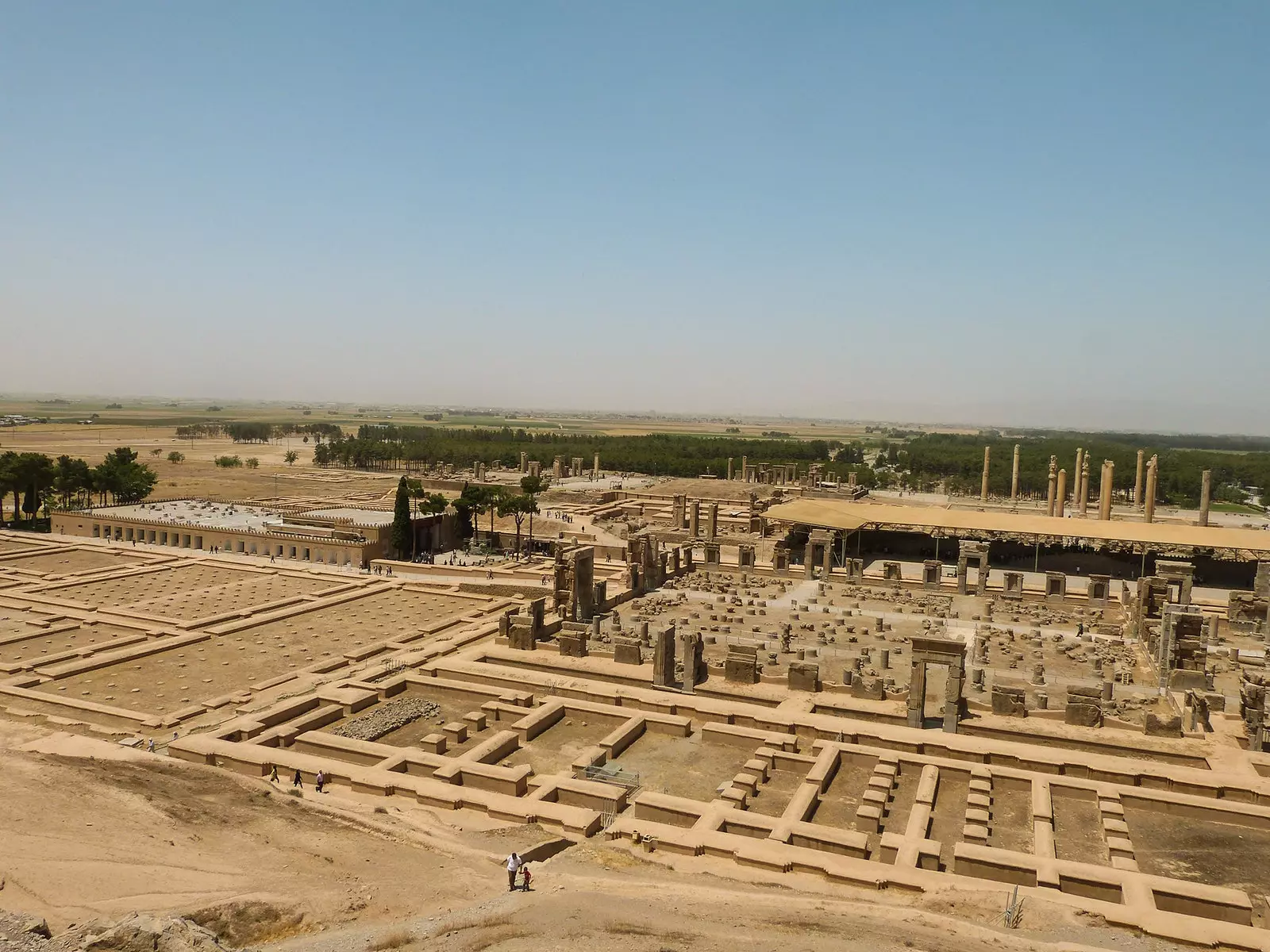
Take height, the show is seen in its entirety from above
